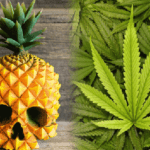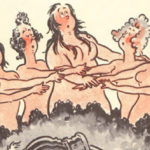 Humans
Humans  Humans
Humans  Movies and TV
Movies and TV 10 Holiday Movies Released at Odd Times of the Year
 Politics
Politics 10 Countries Where Religion and Politics Are Inseparable
 Weird Stuff
Weird Stuff 10 Freaky Times When Famous Body Parts Were Stolen
 Miscellaneous
Miscellaneous 10 Interesting Things Manufacturers Stopped Making and Why
 Gaming
Gaming 10 Funny Tutorials in Games
 History
History 10 Fascinating Little-Known Events in Mexican History
 Facts
Facts 10 Things You May Not Know about the Statue of Liberty
 Movies and TV
Movies and TV 10 Movie Adaptions That Brought Popular Songs to Life
 Health
Health 10 Miraculous Advances Toward Curing Incurable Diseases
 Humans
Humans 10 One-of-a-kind People the World Said Goodbye to in July 2024
 Movies and TV
Movies and TV 10 Holiday Movies Released at Odd Times of the Year
 Politics
Politics 10 Countries Where Religion and Politics Are Inseparable
Who's Behind Listverse?

Jamie Frater
Head Editor
Jamie founded Listverse due to an insatiable desire to share fascinating, obscure, and bizarre facts. He has been a guest speaker on numerous national radio and television stations and is a five time published author.
More About Us Weird Stuff
Weird Stuff 10 Freaky Times When Famous Body Parts Were Stolen
 Miscellaneous
Miscellaneous 10 Interesting Things Manufacturers Stopped Making and Why
 Gaming
Gaming 10 Funny Tutorials in Games
 History
History 10 Fascinating Little-Known Events in Mexican History
 Facts
Facts 10 Things You May Not Know about the Statue of Liberty
 Movies and TV
Movies and TV 10 Movie Adaptions That Brought Popular Songs to Life
 Health
Health 10 Miraculous Advances Toward Curing Incurable Diseases
Top 10 Terrifying But Fascinating Drugs
Drugs. You’ve probably heard that word a lot. From a very early age, we’re taught that drugs are evil and that one experience will get you addicted and ruin your life in a matter of seconds. Later, depending on what media you’re consuming, the messages become more mixed.
Just as varied are the types of drugs out there. Some are extremely dangerous, some are straight-up weird, and some are absolutely disgusting. The drugs listed below are among the most fascinating.
10 Krokodil

Unfortunately, the drug known as krokodil (desomorphine) doesn’t turn you into a half-reptile, half-man supervillain. Rather, its effects are much more gruesome and unbelievable than most street drugs.
Originating in Russia in 1932, krokodil was an experimental morphine alternative. The drug was commercially produced but quickly discontinued due to it being highly addictive. Krokodil reemerged in 2002 as a recreational drug in Siberia and quickly spread throughout Russia. It was extremely potent and cheap. Costing less than heroin, krokodil can be cooked in a kitchen by combining codeine with gasoline, oil, paint thinner, or alcohol. Due to the drug only taking 30 minutes to make, a krokodil addict does little other than gathering the ingredients and concocting the substance.[1]
The drug gets its name from its horrifying effects. Krokodil leaves the user’s skin green, bumpy, and scaly—similar to, you guessed it, a crocodile. Often times, if the addict misses the vein, his skin will begin to rot off entirely, leaving nothing but the exposed bone. Unfortunately for krokodil addicts, the withdrawal is much worse than heroin’s. While heroin withdrawal only takes about ten days, krokodil results in an entire month of excruciating pain. Due to its extreme addictiveness and gruesome effects, the life expectancy of an average user would only be just a year or two.
9 Flakka
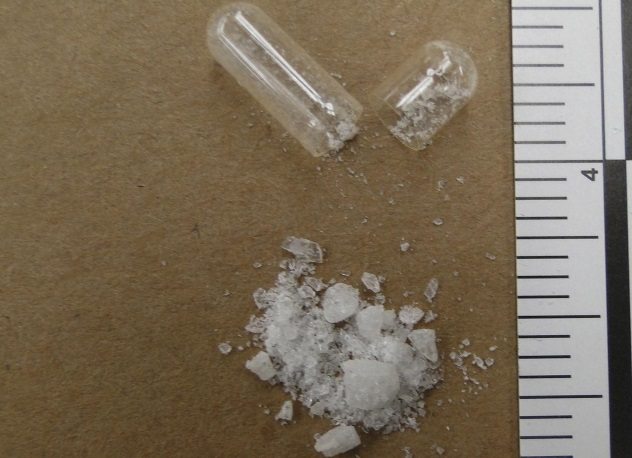
A rather unique drug, flakka (alpha-PDP) is linked to multiple intriguing crimes, such as an addict trying to bite someone’s face off. Seriously, what kind of chemical turns you into a violent, cannibalistic hulk?
Flakka is largely manufactured in China and costs about $5 per hit. The compound was originally synthesized in the 1960s, and its popularity in the US started around 2013.[2] The drug was recognized and banned in 2014, and in 2015, there was a viral video depicting a flakka user acting erratic, which in turn brought this drug to the public’s attention. Along with this, university student Austin Harrouff murdered a married couple and gnawed at the husband’s face. Austin was allegedly high on flakka as he committed this crime. The drug apparently comes in a plastic bag and smells nasty. It can be snorted, eaten, injected, or even vaped.
Flakka’s effects are similar to cocaine or bath salts. The drug is almost ten times more potent than cocaine and causes extreme aggression and almost animal-like behavior. Consuming flakka makes you very alert and paranoid; people tend to lash out and get incredibly angry. It is also said to put the user under “excited delirium,” which involves hallucinations and increased strength, basically putting the consumer into a rage mode. Besides causing unnatural behavior, flakka also increases body temperature, blood pressure, and heart rate, making it likely for the user to suffer a stroke, aneurysm, heart failure, or even death.
8 Bath Salts
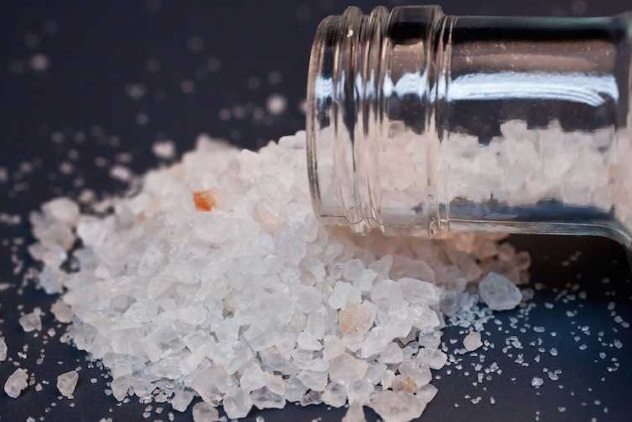
Bath salts aren’t the sort of crystals that make your bath more soothing. Instead, the drug does quite the opposite, minus the bath.
Bath salts, aka synthetic cathinones, were originally synthesized in the 1920s and weren’t noticed until “underground chemists” rediscovered the compounds and used them recreationally around 2009. Bath salts are derived from a shrub called khat, which is indigenous to the Arabian Peninsula and East Africa. Interestingly enough, the plant itself is commonly chewed and only causes very mild effects.[3]
Conversely, bath salts cause huge stimulant effects, and users begin to feel psychotic and jumpy for multiple days after one use. There are many stories of people committing murder, rape, or other criminal acts after using bath salts. The drug usually comes in a crystal form. It can be ingested, snorted, smoked, or ingested. Most bath salt users experience increased blood pressure and heart rate and can die from a heart attack, organ failure, or suicide.
7 Crystal Meth
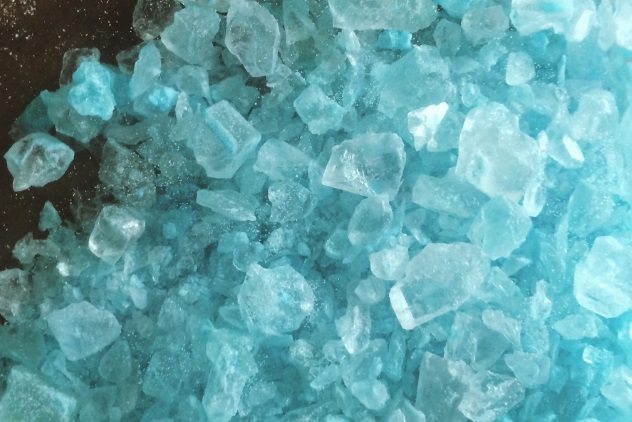
Crystal meth is a very popular drug. You’ve probably heard about it from DARE, Breaking Bad, or any number of other TV shows or movies.
The invention of this drug dates back to 1919, when it was created in Japan. It was discovered that methamphetamine was water-soluble and therefore injectable. It was administered soldiers on both sides in World War II. In 1950, meth was legal in the US and was sold over the counter to deal with depression and as a diet aid. It was easily available, and abuse of the drug continued until it was finally banned in 1970.[4]
Meth looks like a crystal. (What a surprise.) You can usually tell how diluted it is by how clear the crystal looks. It is widely known that meth is bad for you in more than one way. It can increase heart rate and cause erratic or violent behavior, hallucinations, panic, or psychosis. Long-term effects include damaging blood vessels in the brain as well as heart and organ failure.
6 Devil’s Breath

Devil’s breath (also known as burundanga or scopolamine) is one of the most interesting drugs on this list. It isn’t used by junkies. Instead, it is used by criminals on their victims. It’s sort of like slipping a roofie into someone’s drink, except Devil’s breath hypnotizes you.
Scopolamine is derived from a tree called borrachero, which is native to Colombia. The drug is a powdery substance made from the crushed seeds of the plant. It is mainly used in Colombia on tourists or citizens in an attempt to rob them, trap them, or worse. The drug can also be bought over the counter as a seasickness medication.
Most victims are exposed to Devil’s breath by having it slipped into their drink, getting it blown into their face, or even having it soaked into a business card. The scary thing about this drug is that it hypnotizes the victim for around 24 hours. They will answer any question and do whatever someone asks. Meanwhile, the victim shows no signs of being under drug influence. Afterward, the victim has no recollection of what happened.[5]
5 Bromo-DragonFLY

Along with a very interesting name, Bromo-DragonFLY is a unique hallucinogenic with effects that last much longer than usual.
Bromo-DragonFLY is a psychedelic drug which causes hallucinations for up to three days. It was first created in 1998 by Matthew Parker. The name comes from the drug’s molecular structure vaguely resembling a dragonfly. The dosage recommendation is less than 1 milligram. Anything over that is dangerous, and several milligrams can be fatal.[6]
Bromo-DragonFLY is extremely potent, and its effects are rather prolonged. The drug takes a while to kick in, and the trip varies from person to person. Most experience a long and subtle trip in which sounds, colors, and feelings are slightly more defined, but not to the point of heavy psychedelic drugs. Others experience nausea and disgust after a short trip.
4 Lean
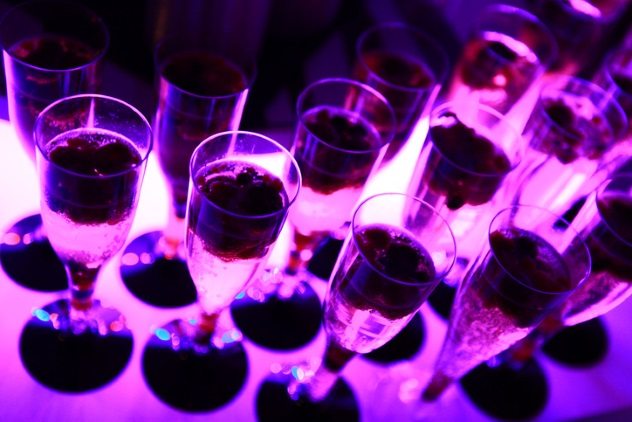
Lean, or “purple drank,” is a rather creative and sweet-sounding drug that is anything but. This cough syrup–based drink gained fame through hip-hop and a number of football players using it.
Purple drank is an odd concoction of cough syrup, soda, and Jolly Ranchers.[7] The drug is often glamorized in hip-hop and has been endorsed by Lil Wayne, which influences a lot of people to take this sweetened cough syrup:
Sippin on some drink the color purple like silly,
Really they say I should chill before it kills me,
But so will a car crash or a nine milli. —Lil Wayne, “Me And My Drank”
Some cough syrup contains codeine, which is an opiate and is in the same family as heroin. Using cough syrup as a drug is incredibly harmful. The effects range from slurred speech and droopy eyes to slowed heart rate and possible urinary tract infection. Death from purple drank is very common, as it is easy to overdose on it. Mixing the drink with alcohol is extremely lethal.
3 Whoonga
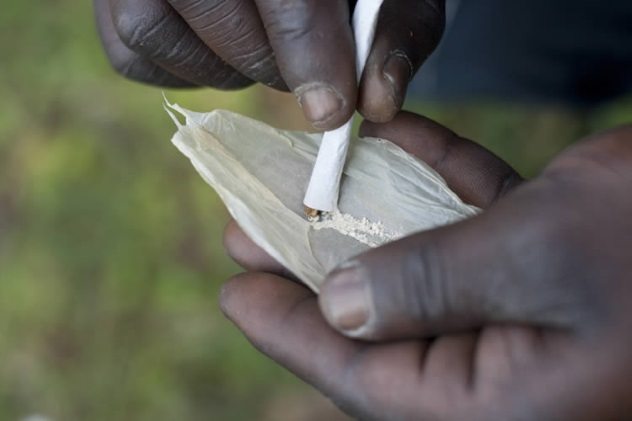
One of South Africa’s most dangerous and destructive drugs, whoonga (aka nyaope) is a revolting mixture of many toxic elements.
Whoonga, mainly used in the slums of Durban and other poor towns in South Africa, became popular around 2010. Although not much is known about how the drug was first created, we know that it can be made out of different mixtures of rat poison, heroin, detergent powder, antiretroviral drugs, milk powder, pool cleaner, and baking soda. The drug is commonly used in schools and streets in Durban. Many people are addicted to whoonga, and the withdrawal is nothing less than torture.[8]
The drug looks like a white powder and is generally rolled up and smoked. After inhaling, the user feels content and relaxed, with a rush of warmth and comfort. This high lasts for about two to four hours, with a less intense euphoria for a few more hours. Afterward, the user feels terrible effects such as severe abdominal pain, aches, anxiety, depression, and extreme nausea. Whoonga also affects nonusers, because production of this drug uses up a large amount of HIV/AIDS medication to create, depriving many HIV-infected people of their medicine.
2 DMT
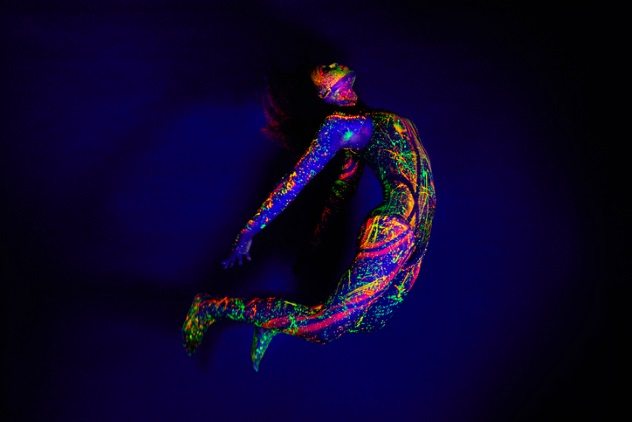
Although DMT can be among the safer drugs on this list, one should still be extremely cautious when ingesting it. DMT is considered the most powerful hallucinogen in the world.
DMT, or N-N-Dimethyltryptamine, occurs in nature but was first synthesized in 1930 by British chemist Richard Manske. Its effects weren’t discovered until 1956, when Hungarian chemist Stephen Szara extracted DMT from the mimosa plant and injected it into his body. DMT is unique not only for its power but for the fact that its effects last a significantly shorter amount of time than most common psychedelics, such as LSD and psilocybin. LSD is known to last eight to 12 hours, whereas DMT lasts merely five to 15 minutes! Although the effects are short, don’t underestimate this powerful substance, as the trip can feel like hours, days, months, or even years.
In its purest form, DMT is a crystal, so the most common way to ingest it is by vaporizing it. This process can be tricky, as burning the DMT will not produce the same effects as properly vaporizing it. After inhaling it and holding it in your lungs for as long as you can, you’ll begin to hear a loud buzzing. This buzzing is paired with intense vibrations, and before you know it, you black out. Now, you are entering a tunnel of colors and geometric shapes that seem to be endless. If the drug is ingested properly, the user breaks through and now enters a universe with stunning views, unexplainable colors, and remarkable geometric shapes. In this universe, most users claim that they are talking to God Himself or godlike entities.[9]
What’s even stranger is that nearly everyone who has taken DMT has experienced similar effects, which leads some to believe that the so-called “spirit molecule” may be a literal gateway to another dimension. Although the entire process may seem overwhelming, the user is entirely in a state of euphoria.
1 Salvia

Although Salvia divinorum is in the same family as mint, rosemary, and thyme, you should not confuse them, as one is an unbelievably potent hallucinogen, while the others are merely cooking ingredients.
Salvia is an extremely powerful psychotropic herb. It can be ingested by chewing the leaves raw, but the most common practice is to smoke the dry leaves of the plant.[10] Once smoked, the effects are immediate and intense. They last only about five to ten minutes, but they can feel far longer than that.
Oddly enough, the FDA hasn’t yet banned salvia, rather just listed it as a “drug of concern.” This is quite strange for a substance that can cause out-of-body experiences. Although significant, that isn’t the only effect. The user often experiences weightlessness, a feeling of traveling through space and time, sensations of spinning, and soreness. Some physical effects that occur while ingesting salvia include dizziness, nausea, and lack of coordination.
Although a lot of people may be interested in this legal hallucinogen, there is quite literally no point to it. Unlike most psychedelics, salvia has no real euphoria to it, and rather than feeling good, the user just experiences fear. Because of this, somebody’s first time smoking salvia is often their last.
For more intoxicating facts about drugs, check out Top 10 Illegal Street Drugs That Actually Have Really Good Uses and Top 10 Terrifying Zombie Drugs.



